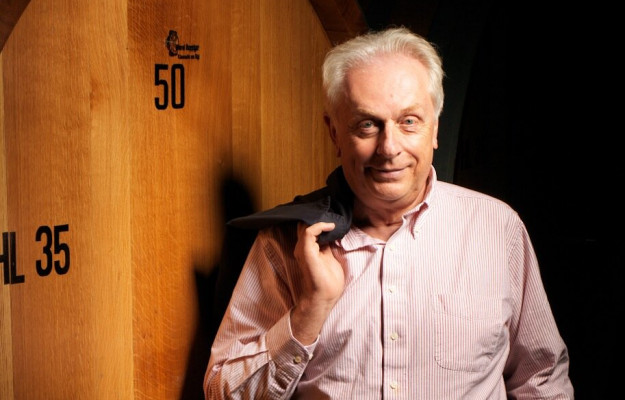Living in a pandemic is definitely rough for everyone. But at least the leading wine flagships are managing to stay on course, through numerous challenges. Barolo wine, mainly thanks to its now consolidated appeal among enthusiasts and collectors around the world, is dealing in a market that has not collapsed (and bulk prices, according to insiders, are stable, around 600 euros per hectoliter). Net of an undoubtedly complicated situation for the “king” of Langhe wines as well, there are those who have opened to alternative channels, such as “wine clubs” and collectors, and have even seen their performance grow compared to 2019. The merit goes also to the 2016 vintage on the market, exalted by international critics, and to the undisputed value of the crus, which further enhance the production of the appellation. Nonetheless, we look to the future, well aware of the strength of Barolo, but with legitimate and reasonable concerns, dictated mostly by the situation linked to Covid-19, which is not calming down and we do not know how much longer it will last. Plus, we must consider all the economic, market and other uncertainties that it entails. Comfort for the producers comes from their most precious asset, namely the vineyard. The 2020 harvest was rather complicated from the viewpoint of finding labor. However, to those who had the courage and the patience to wait for the right moment, even though there was a lot of bad weather just days before the harvest began, it finally brought very healthy grapes, ripened perfectly and quantities were good as well was good quantities. This sums up the messages that came from the meeting (on Zoom) of Deditus, mediated by the journalist of the newspaper “Il Sole 24 Ore” Giorgio dell'Orefice. Deditus is an association led by Gianni Gagliardo, which brings together historical Barolo family businesses, such as Amelia, Cordero di Montezemolo, Luciano Sandrone, Michele Chiarlo, Pio Cesare, Poderi Gianni Gagliardo, Poderi Luigi Einaudi, Prunotto and Vietti.
“We brought perfectly ripened grapes to the winery”, said Luigi Scavino of Cantina Azelia, and Luca Sandrone of the Luciano Sandrone winery confirmed and talked about “good acidity and a great wealth of polyphenols”, and so did Gianluca Torrengo della Prunotto, who focused on the “great aromas the grapes released”.
Pio Boffa, also from the vineyard and at the helm of the historic Pio Cesare, said, “for years we have not seen grapes like this, Nebbiolo grapes that gave red drops. We must jump for joy for their quality, and on another occasion, we should jump for joy for quantities, too. Instead, I am already thinking about the 2021 harvest, and about the fact that we must hope that there will be enough space in the cellars by then”. Pio Boffa is referring to, of course, the market difficulties brought about by Covid. “Since the seventies, when we started traveling to make Barolo known around the world, our great allies have been Italian restaurateurs, whose consumers tasted our wines, which then conquered many people, thanks to their unique characteristics. No one has neglected off-trade, but we have relied largely on this channel, on HORECA, and all of a sudden we found it closed down in Italy, the USA, Asia and Australia. Canada and Northern Europe held up better at the beginning, but then there were serious problems, and it is evident that you cannot move from one channel to another quickly, especially for an important wine like Barolo. Direct and online sales, etc. all help a little, but we must take this seriously. If the restaurants in the markets where we sell half of our wine are closed, it is very clear that it will not recover from one moment to the next. This is a pity, because the 2016 vintage would have made a big splash on the markets, and instead, unfortunately, it could not. It is true that we must think positively, but it is just as true that we are suffering, and we must let the market and consumers know about it”.
“We had thought we would have finished Barolo 2016 in six months, and since the year started out so well, we were convinced that’s what would happen. Then Covid-19 arrived, and everything we experienced in Italy happened also the world over. It is true that Barolo consumers and collectors around the world are continuing to have high incomes, notwithstanding the economic difficulties, and, therefore, I partly share concerns for 2021, and for the 2017 harvest that will arrive on the market and is very good, but it will not have the media attention that 2016 had”, said Emanuele Baldi, marketing director of Prunotto. Then there are also special cases that go against the trend, like the one Matteo Sardagna, at the helm of the historic Poderi Luigi Einaudi told, “we have managed to capitalize on a series of contacts and work done over the past years, positioning our wine in many “Wine clubs” around the world, as well as to many collectors through wine shops. Therefore, I must say that, in our case, we have even grown compared to 2019. However, there are still many challenges such as a promotion strategy that obviously needs to be revisited. It is essential to understand how long this situation will last, and, especially in Italy, there is also the debt collection problem. In the HORECA channel there are those who really are struggling, but there are also those who are using this phase as an excuse, and it is sometimes difficult to get paid for orders more than a year old”.
Alberto Cordero, at the helm of the Cordero di Montezemolo reflected on promotion, “it is a broad and complex conversation, as thinking like we did until a few months ago makes little sense today. There are issues like mobility and travel, which are global, while events, fairs and dinners cannot take place. It is a socio-economic matter, and until certain issues that go far beyond wine are resolved, it is useless to think of having money available for promotion. Rather, in a more general logic, one should think about spending public money to support mobility in safety, as well as those who work and consequently, earn money to maybe be able to also spend on a good bottle of wine. It is a very complex issue, and we expect more attention from institutions. Different implementations could have been made against the pandemic, but the numbers, especially in the last week, tell us that what has been done has not yielded enough”.
Nevertheless, we must look to the future, even beyond Covid. Stefano Chiarlo, at the helm of Michele Chiarlo sent his message, “I am starting from the fact that I was surprised, this summer, to see so many tourists in Langa, which is now a place of great attraction thanks to wine, catering, and all that is slow tourism. We must look to digital to be ready, as a territory, for 2022, when we will probably be really out of this crisis. So, I hope there is that spirit of re-launching and growth, of the desire to work and enjoy the good and the beauty that life offers, which existed in the post-war period, as my father Michele Chiarlo told me”.
Gianni Gagliardo, responding to a question from WineNews on future strategies, summed up, “in the coming months I think we should do what we have done in this past period. Investing in channels that have more direct contact with the consumer, in the web, in the supervision of wine shops and so on, but we cannot do more than that. This is a moment in which more than anything else, until the markets restart, what we have to do is resist, and perhaps avoid wasting resources. On the subject of crus, I would like to say that they are and will remain an absolute value, a primary tool for enhancing Barolo, which has this uniqueness. There are 181 crus on just over 2.000 hectares. These crus at times, for the most expert and passionate consumers of Barolo, have become almost more important than the corporate brands. Enhancing the crus is a path that the territory has undertaken, and which must undoubtedly continue on”.
Copyright © 2000/2025
Contatti: info@winenews.it
Seguici anche su Twitter: @WineNewsIt
Seguici anche su Facebook: @winenewsit
Questo articolo è tratto dall'archivio di WineNews - Tutti i diritti riservati - Copyright © 2000/2025









































































































































































































